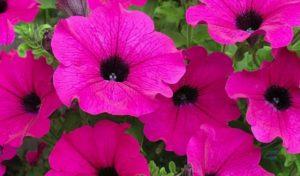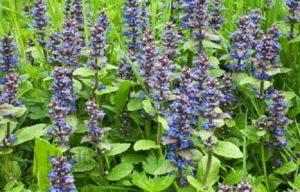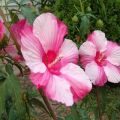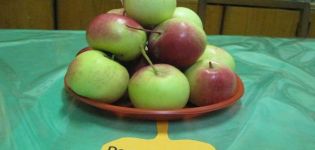Reproduction, cultivation and care of garden hibiscus
New varieties of hibiscus appear on the market every year. Breeders love this beautifully flowering plant. In the gardens of the middle lane, a frost-resistant variety is grown - garden hibiscus, flower care and its reproduction have their own characteristics.
Description and characteristics of tree hibiscus
More than 200 varieties of hibiscus are known. In nature, they grow in countries with subtropical and tropical climates, many species are domesticated. The variety of Syrian hibiscus (garden) is popular among flower growers. It is represented by tall deciduous shrubs.
Straight, even branches 3-6 m long are covered with oval, bright green leaves. They are tough, glossy, shaped like oak leaves. The flowers are single, double or simple, up to 12 cm in diameter. The color of the petals is one-color or two-color. Color shades are different:
- white;
- dark red;
- soft lilac;
- dark purple;
- pale and bright pink.
This type of shrub plant develops slowly. Growth rate depends on the quality of care. Proper watering plays an important role. Blooms in the 3-4th year of life. The flowering period is long. It starts in July and ends closer to November.
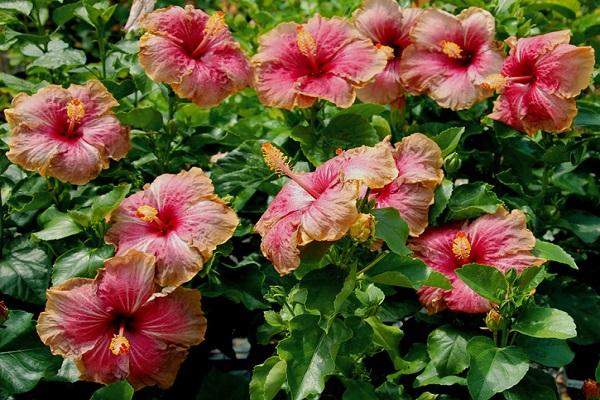
The flower lives and pleases the eyes with its appearance for only 1 day. The buds open in the morning, close by the end of the day. This does not affect the degree of decorativeness of a tree-like shrub. There are many buds, they bloom every day, so the bush is covered with large flowers every day.
The frost resistance of varieties with simple flowers is higher than that of the double varieties of Syrian hibiscus. The latter must be covered for the winter, and varieties with simple flowers can easily tolerate winters with little snow with short-term frosts up to 5-10 ° C. The Syrian hibiscus needs to be covered if the winter temperature stays around -15 ° C for weeks.
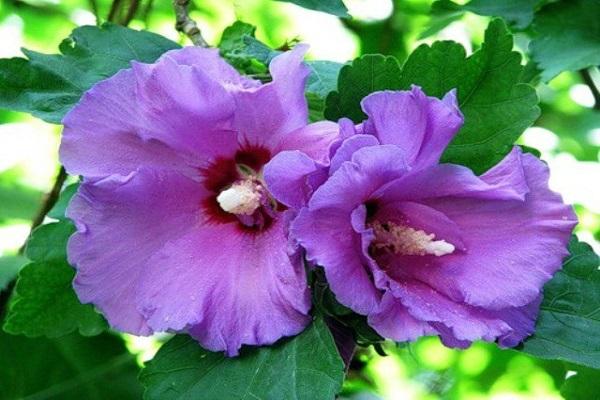
Most popular varieties
Gardeners grow different varieties of garden hibiscus. They differ in shape, size, color of flowers:
- bush variety with pink-purple flowers - Ardens;
- lovers of white choose Monstrosus, Totus Albus, William R. Smit and Speciosus, which blooms with double flowers;
- Roseus Plenus has dark pink petals;
- Due de Brabant flowers are dark red with white stripes.
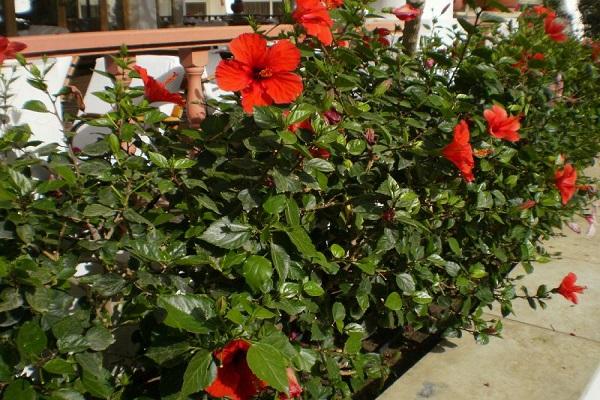
Reproduction of hibiscus
There are no problems with reproduction. In practice, flower growers successfully use seed and vegetative propagation methods.In one place, the bushes grow for 20 years.
Seeds
Perennial seeds are in boxes. They are collected in the last days of November or early spring. In the southern regions, the culture reproduces by self-sowing, blooms in the 3rd year. The method allows to grow zoned, frost-resistant seedlings. They inherit all the varietal characteristics of the parent plant.
The seeds can be purchased at the store. They are large and easy to plant. Any light, fertile soil is suitable. You will need a small container and a zip bag. The seeds are buried 1 cm. The soil is moistened with a spray bottle. The container is placed in a bag, the lock is latched. Seeds are germinated at 25 ° C.
On the 7-10th day, seedlings appear. The package is opened, but not removed for 3 days. In the phase of 4-5 leaves, seedlings dive into separate cups, provide them with care and conditions:
- diffused intense light;
- regular watering;
- top dressing (Agricola for flowering plants).
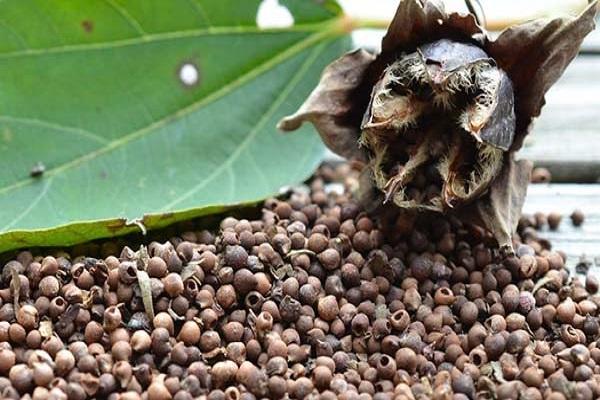
Cuttings
Perennial can be propagated by cuttings. You can cut them in the spring (end of February, March). For this purpose, matured branches with a length of at least 25-35 cm are suitable. You can root them in water. It is correct to keep the jar with cuttings on the south window. The roots appear within a month.
Transplant into separate containers when their length reaches 3-4 cm.For planting, use the mixture:
- turf land;
- humus;
- sand.
In June, seedlings grown from cuttings are ready for transplanting into open ground.
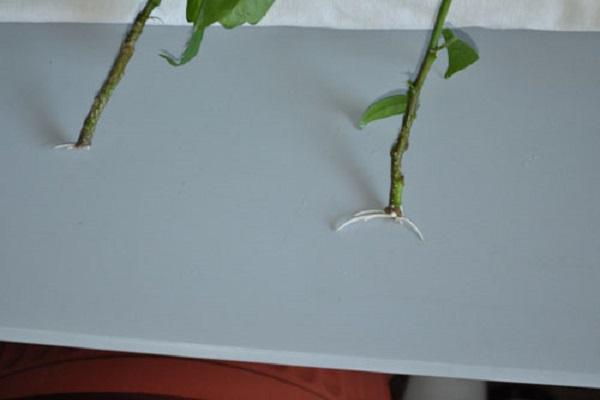
Dividing the bush
This method is not applicable to tree species. By dividing the bush, herbaceous forms are propagated.
Features of planting garden hibiscus
Choose a sunny, open place in the garden. The tree species does not like shadow. It grows in partial shade, but fewer buds are formed during flowering. Prefers loose soil with a high humus content. It should pass water well, since the shrub does not tolerate waterlogging.

Where and when to plant
In the open field, bushes of garden hibiscus are used as a tapeworm. Standard and bush forms look decorative. The graceful flowers are favorably emphasized by the emerald green lawn grass. An ornamental plant is planted in flower beds with perennial flowers. Compact, low bushes go well with tall varieties of roses.
Lavender is considered an excellent companion. During flowering, its pale purple flowers set off hibiscus favorably. At the same time, lavender drives away aphids from a neighbor. Conifers (thuja, Cossack juniper) serve as a good background for a shrub covered with pale green foliage.
The life span of a bush depends on the location. The shrub does not tolerate drafts and the north, north-west wind, so hibiscus seedlings are planted from the south, south-west side of the house or fence. Landing times depend on the weather conditions in the region.
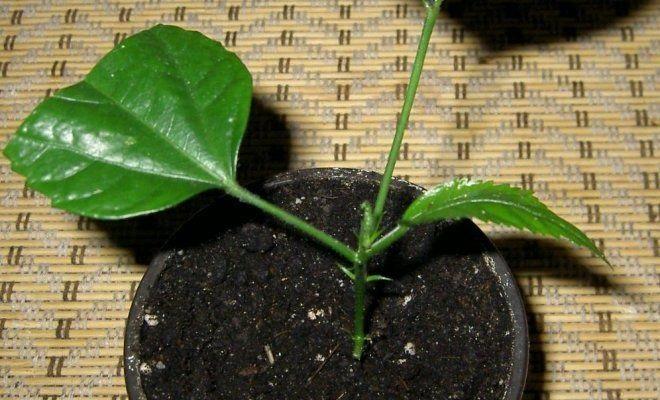
How to plant hibiscus
They dig a hole 30-35 cm larger than the root ball. Put humus (1 shovel), urea (1 matchbox) and garden soil down. Mix everything well. The depth of the finished pit should correspond to the height of the root ball.
Transhipment is carried out:
- the hibiscus seedling is removed from the container;
- put in a pit;
- sprinkle with garden soil;
- watered.
The pits are located at a distance of 1.5 m from each other. Consider the future size of the crown. In adult hibiscus bushes, the crown diameter reaches 0.7 m.
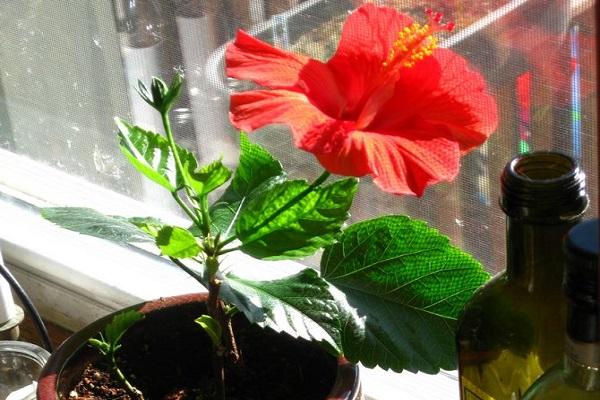
Plant care rules
It is not difficult to care for the Syrian hibiscus. Standard care (watering, top dressing). In the summer, it is necessary to pick off dried flowers, this lengthens the flowering period.
Watering and feeding
For abundant flowering in May, the hibiscus bush needs to be fed with potash fertilizer. For regions with cold winters, summer feeding is important. During this period, a bias is made on fertilizers containing phosphorus. They increase the frost resistance of hibiscus, prepare the plant for winter.
Feeding is carried out 2 times a month throughout the growing season. Water the hibiscus bushes under the root. The frequency of watering depends on the weather and rainfall. In case of prolonged heat and drought - weekly. An adult plant needs at least 10 liters of water. Due to the drying out of the soil, hibiscus can shed its buds.
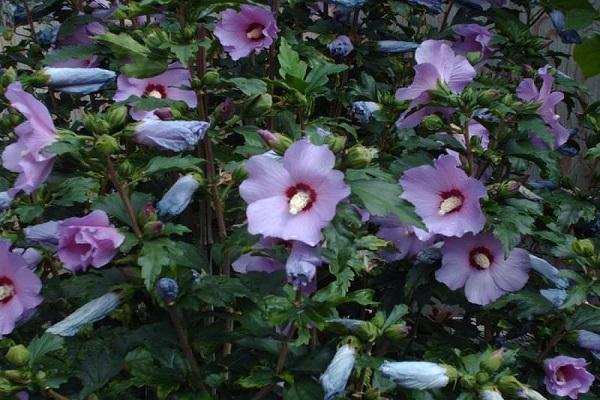
Loosening and mulching hibiscus
The land is compacted after irrigation and rain. By loosening the entire area of the trunk circle, the air permeability of the soil is restored. Weeds are removed every week. To reduce moisture evaporation, the ground around the bush is mulched.
Hibiscus wintering
For the winter, the shoots of an adult bush are cut to ⅔ of the length. In regions where temperatures drop to -15 ° C and below, all varieties of hibiscus are covered. Covering material is used (lutrasil, spunbond). The more layers, the more reliable the shelter.
Stamp forms are wrapped, arcs are placed over low bushes. The soil around the trunk is mulched with a layer of sawdust, humus, straw, peat.
Do I need to trim?
Since the tree-like hibiscus blooms on the shoots of the current year, in the fall (spring) gardeners carry out obligatory pruning:
- shorten the upper part of the faded shoots of adult bushes;
- the shoots of young hibiscus are cut to the maximum.
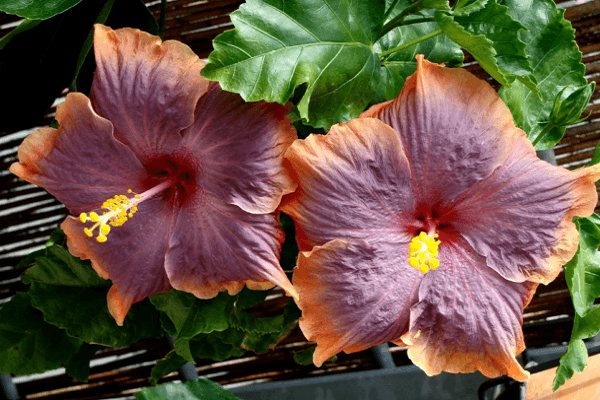
Short pruning of young plants helps to form a strong bush with a good crown. By pruning hibiscus branches, they stimulate the growth of new shoots, achieve abundant flowering.
Diseases and pests
Seedlings and young bushes of garden varieties suffer from the invasion of aphids and spider mites. You can see pests on the inside of the leaves. Plants are stunted due to pests. If insects are found, the bushes are treated with Fitoverm Forte.
Garden species rarely suffer from fungal diseases. When symptoms (spots) appear, the aerial part of the plant is sprayed with a fungicide solution:
- "Agate";
- Abiga Peak;
- "Alirin".
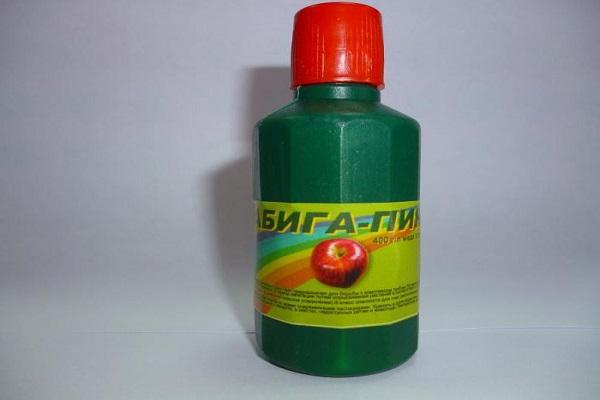
The nuances of growing in different regions of Russia
In the southern regions, pruning (sanitary, formative) is carried out in the spring, until the plant begins to grow - late March, early April or late autumn (late November). Experienced gardeners prefer to practice shrub formation in the spring.
In the middle lane, winters are frosty, therefore it is recommended to carry out formative pruning before the onset of frost. It is much easier to cover the cut bushes for the winter. In the southern regions, 2 types of formative pruning are practiced:
- standard;
- bush.
In temperate climates, it is advised to form a hibiscus in the form of a bush.
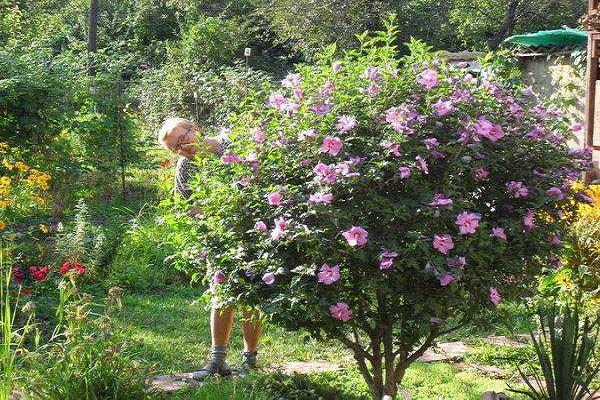
Possible growing problems
The lack of nutrients affects the appearance of the ornamental shrub. The Syrian variety develops chlorosis with a lack of iron and nitrogen. The leaves turn pale, turn yellow. The veins on them are clearly visible. They solve the problem with root and foliar feeding.
With excessive watering, root decay occurs. This leads to poor nutrition. The plant begins to shed its leaves. Early leaf fall can be provoked by pests living in the soil:
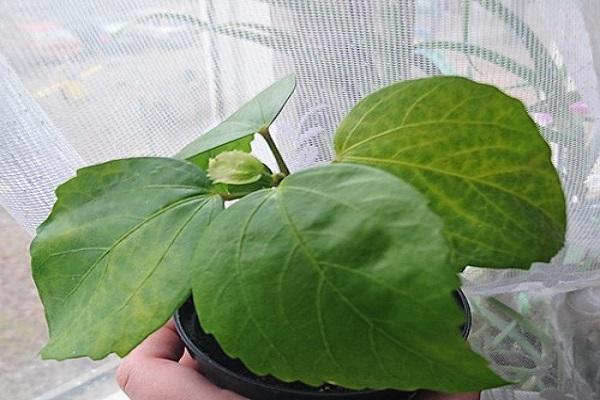
- wireworm;
- beetle larvae.
With the help of a spectacular plant, the garden takes on individuality. Treelike shrubs can be shaped into any shape with garden shears. When properly planted, caring for a flowering plant does not take much time. It is extremely rare, unlike roses.
